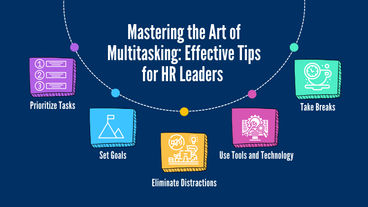
Workplace Violence: Prevention and Response
Posted on 04/30/20 By Lorman Team
It's one of those things that you hope will never happen; violence happening in your office. Preventing workplace violence is a key part of employee safety. Although it's unlikely that you will have a serious incident such as a workplace shooting, it is possible. In fact, the fourth leading cause of workplace deaths is assaults, according to the National Safety Council. It's important to have policies and education in place to reduce violence and promote safety in the workplace.
Types of Workplace Violence
There are four main types of workplace violence:
-
Criminal intent. This is violence that has no direct connection to the business or its employees, or which happens as part of another crime such as robbery.
-
Customer/client. This is when a customer or client becomes belligerent. Most often this takes the form of threats, but it can sometimes escalate. Healthcare workers tend to be at particular risk, because they are dealing with people under stress. Barkeepers and wait staff at restaurants that serve alcohol can also be at higher risk.
-
Worker-on-worker. Violence between coworkers includes bullying and various kinds of abuse. This includes supervisors being abusive towards their charges.
-
Personal relationship. This is when there's an outside relationship between the worker and the perpetrator, and women are most commonly the victims. The most common reason is a stalker who follows an employee to work.
Best Ways to Prevent Workplace Violence
Workplace violence can range from verbal harassment all the way up to shootings; but the best ways to prevent it cover, thankfully, most of the range. In fact, dealing with minor incidents can prevent a situation from escalating into something major. Here are some tactics you can use:
-
Have a solid workplace violence policy. The details tend to vary by industry, and you should be aware of the specific risk factors for your workers. The policy should include things that workers can do to keep themselves safer but should also focus on dealing with bullying and abuse. Make sure there is a mechanism for employees to complain to HR without it having to go through their immediate supervisor (who may be the problem or enabling the problem).
-
Know your risk factors. Risk factors for workplace violence include exchanging money, delivering passengers, working with unstable or volatile people, late night and early morning shifts, working alone, uncontrolled public access to the workplace, etc.
-
Set up proper methods to control entry access and access to cash. Surveillance cameras can be helpful if any potential thief is warned of their problem.
-
Make sure staffing is adequate. Customers and clients often become angry about extended wait times, especially if they are already stressed.
-
Conduct criminal background checks of all employees and make sure to check references.
-
Develop a culture of support so people know they can come forward. There should never be any penalties for coming forward and retaliation should be cracked down on instantly.
-
Take employees who say they are being stalked seriously. Make sure you have policies in place to ensure that the problem individual does not have access to the workplace and/or to the employee concerned. In some cases, it may be necessary to have somebody walk an employee who is dealing with a stalker or a violent ex to and from their car.
-
Use buddy systems so employees are never working alone, especially at night and/or in poorly lit areas.
-
Provide panic buttons to high-risk employees.
-
Consider workplace violence or active shooter insurance if it seems needed.
-
Train everyone to observe indicators of potential violence, which might include increased use of alcohol, unexplained absenteeism, poor hygiene, suicidal ideation, paranoia and explosive anger.
-
Be aware of the types of employees who tend to commit violence if terminated, such as bullies, disgruntled individuals, or those in extreme emotional distress. Unfortunately, this isn't exhaustive, and anyone is capable of violence. Make sure that security is told promptly when somebody is fired.
There are far more ways to prevent workplace violence than can be covered here. A comprehensive violence prevention plan will cover all of these and more and will help keep your employees safe. 
Sources:
- https://www.nsc.org/work-safety/safety-topics/workplace-violence
- https://wwwn.cdc.gov/wpvhc/Course.aspx/Slide/Unit1_5
- https://www.osha.gov/SLTC/workplaceviolence/
- https://www.shrm.org/resourcesandtools/tools-and-samples/toolkits/pages/workplace-violence-prevention-and-response.aspx
Related Articles
Manage your workload without compromising productivity and mental health.
Many modern businesses are doing away with the annual performance reviews. But what should replace the traditional performance review so you can continue to motivate and monitor employee performance?
Succession planning is essential to help organizations plan ahead by preparing current employees for future key roles and helping them develop in their careers.



